User:Johntobey/Human evolutionary pedigree
Appearance
This table shows the human evolutionary pedigree, excluding extinct groups. It attempts to list all extant sister taxa of clades that contain humans. As of July 2013, much of this information is subject to debate and ongoing research, and the linked articles often contradict each other.
| Parent Group | Sister Group | When Diverged | Example | Notes |
|---|---|---|---|---|
| Hominini | Chimpanzee, 2 species | 8 million years ago[1] |  | |
| Homininae | Gorilla, 2 species | 11 million years ago[1] |  | |
| Hominidae | Orangutan, 2 species | 16 million years ago[1] |  | |
| Ape | Gibbon, 16 species | 22 million years ago[1] | 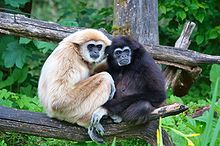 | |
| Catarrhini | Old World monkey, 139 species | 29 million years ago[1] |  | |
| Simian | New World monkey, 148 species | 43 million years ago[1] |  | |
| Haplorrhini | Tarsier, 10–13 species | 64 million years ago[1] | 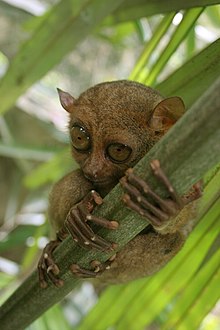 |
Alternative: tarsiers as Strepsirrhini, i.e., Prosimians.[1] |
| Primate | Strepsirrhini, 125 species | 64 million years ago[1] | 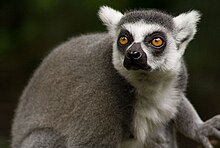 | |
| Primatomorpha | Colugo, 2 species | under 66 [2]–68 [1]–80 [3] million years ago | 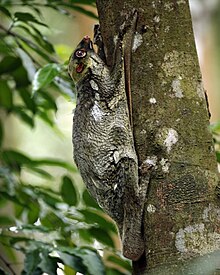 | |
| Euarchonta | Treeshrew, 20 species | under 66 [2]–86 million years ago[3] |  | |
| Euarchontoglires | Glires, c. 2,357 species | under 66 [2]–88 million years ago[3] |  | |
| Boreoeutheria | Laurasiatheria, c. 2,286 species | under 66 [2]–90 million years ago[citation needed] |  | |
| Eutheria | Atlantogenata, 108 species | under 66 [2]–110 million years ago[citation needed] | 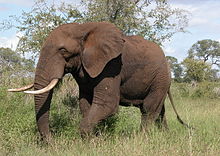 |
Alternatives: Epitheria, Exafroplacentalia. |
| Theria | Marsupial, 334 species | c. 125 million years ago[citation needed] |  | |
| Mammal | Prototheria, 5 species | c. 220 million years ago[citation needed] |  | |
| Amniote | Sauropsida | c. 315 million years ago[citation needed] |  | |
| Tetrapod | Lissamphibia | c. 365 million years ago[citation needed] |  |
Alternative: Caecilian. |
| Rhipidistia | Lungfish, 6 species | c. 390 million years ago[citation needed] |  | |
| Sarcopterygii | Coelacanth, 2 species | c. 390 million years ago[citation needed] |  | |
| Osteichthyes | Actinopterygii, c. 24,000 species | over 420 million years ago[citation needed] |  | |
| Gnathostomata | Chondrichthyes | c. 461 million years ago[citation needed] | 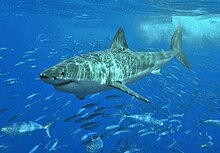 | |
| Vertebrate | Hyperoartia, 43 species | c. 462 million years ago[citation needed] | 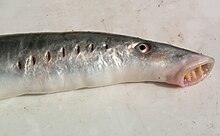 | |
| Craniata | Hagfish, c. 77 species | over c. 550 million years ago[4] |  | |
| Tunicate, c. 3,000 species | over c. 550 million years ago[4] |  | ||
| Chordate | Lancelet, c. 20 species | over c. 550 million years ago[4] | 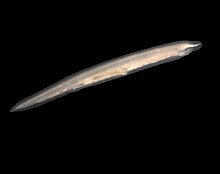 |
Alternatively grouped with tunicates. |
| Hemichordata, c. 120 species | over c. 550 million years ago[4] |  | ||
| Deuterostome | Echinoderm, c. 7,000 species | over c. 550 million years ago[4] | 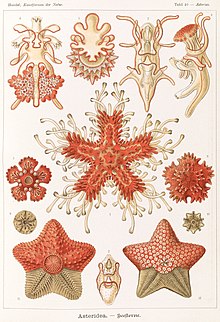 |
Alternative: Lophophorate. |
| Protostome, millions of species | over 558 million years ago[citation needed] | 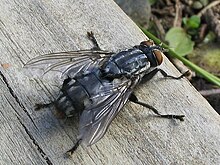 | ||
| Bilateria | Flatworm, c. 20,000 species | over c. 550 million years ago[citation needed] |  | |
| Cnidaria, 9,000+ species | over c. 580 million years ago[5] | 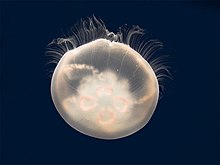 | ||
| [6] | Placozoa, 1+ species | over c. 580 million years ago[5] | 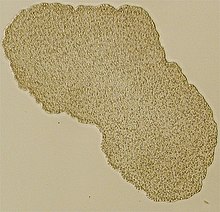 |
Placozoa may have diverged after Cnidaria.[citation needed] |
| Ctenophora, 100-175 species | 604 –634 million years ago[7] |  | ||
| Calcarea, c. 400 species | 940 [8]–1,800 +[9] million years ago |  |
Alternatives: demosponges, Homoscleromorpha, Silicarea | |
| Demosponge, 8,000+ species | c. 940 [8]–1,800 +[9] million years ago | 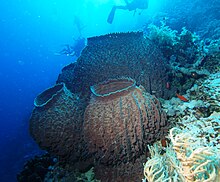 |
Alternative: Homoscleromorpha | |
| Animal | Homoscleromorpha[10], fewer than 100 species | c. 940 [8]–1,800 +[9] million years ago |  | |
| Choanoflagellate, 125+ species[11] | c. 940 [8]–1,780 [12] million years ago |  |
Horizontal gene transfer may affect lineage. | |
| Filozoa | Filasterea | c. 940 [8]–1,780 [12] million years ago | Horizontal gene transfer may affect lineage. | |
| Holozoa | Mesomycetozoea | c. 940 [8]–1,780 [12] million years ago | Horizontal gene transfer may affect lineage. | |
| Opisthokont | Holomycota | c. 940 [8]–1,780 [12] million years ago |  |
Horizontal gene transfer may affect lineage. |
| Unikont | Amoebozoa | c. 940 [8]–1,780 [12] million years ago |  |
Horizontal gene transfer may affect lineage. |
| Eukaryote | Bikont | c. 940 [8]–1,780 [12] million years ago[13] |  |
Plants may be bikonts. The bikont group may be paraphyletic.[14] Horizontal gene transfer may affect lineage. |
| [15][16] | Archaea | c. 1,680 –1,780 million years ago[12] | 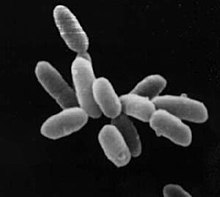 |
Horizontal gene transfer may affect lineage. |
| Cell | Bacteria | c. 2,150 [12]–2,700 [17] million years ago |  |
Horizontal gene transfer may affect lineage. |
| Biota | Non-cellular life | 3,900 million years ago[citation needed] | 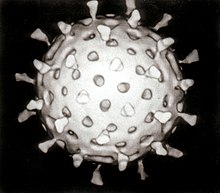 |
Horizontal gene transfer may affect lineage. |
| Matter | Inorganic compound | 4,000 million years ago[citation needed] |  |
See also
[edit]References
[edit]- ^ a b c d e f g h i j Helen J Chatterjee, Simon Y.W. Ho , Ian Barnes & Colin Groves (2009). "Estimating the phylogeny and divergence times of primates using a supermatrix approach". BMC Evolutionary Biology. 9: 259. doi:10.1186/1471-2148-9-259. PMC 2774700. PMID 19860891.
{{cite journal}}: CS1 maint: multiple names: authors list (link) CS1 maint: unflagged free DOI (link) - ^ a b c d e O'Leary, MA; Bloch, JI; Flynn, JJ; Gaudin, TJ (2013). "The Placental Mammal Ancestor and the Post–K-Pg Radiation of Placentals" (PDF). Science. 339 (6120): 662–7. doi:10.1126/science.1229237. OCLC 827160921. PMID 23393258. Retrieved February 2013.
{{cite journal}}: Check date values in:|accessdate=(help); Unknown parameter|coauthors=ignored (|author=suggested) (help); Unknown parameter|month=ignored (help) - ^ a b c [1], Flying lemurs are the closest relatives of primates
- ^ a b c d e http://www.nature.com/nature/journal/v402/n6757/abs/402042a0.html
- ^ a b Chen, J-Y.; Oliveri, P; Li, CW; Zhou, GQ; Gao, F; Hagadorn, JW; Peterson, KJ; Davidson, EH (2000). "Putative phosphatized embryos from the Doushantuo Formation of China". Proceedings of the National Academy of Sciences. 97 (9): 4457–4462. doi:10.1073/pnas.97.9.4457. PMC 18256. PMID 10781044.
- ^ Ryan, Joseph F.; Pang, K.; NISC Comparative Sequencing Program, Nisc; Mullikin, J. C.; Martindale, M. Q.; Baxevanis, A. D. (October 2010). "The homeodomain complement of the ctenophore Mnemiopsis leidyi suggests that Ctenophora and Porifera diverged prior to the ParaHoxozoa". EvoDevo. 1 (1): 9. doi:10.1186/2041-9139-1-9. PMC 2959044. PMID 20920347.
{{cite journal}}: CS1 maint: date and year (link) CS1 maint: unflagged free DOI (link) - ^ Peterson, Kevin J.; Butterfield, Nicholas J. (2005). "Origin of the Eumetazoa: Testing ecological predictions of molecular clocks against the Proterozoic fossil record". Proceedings of the National Academy of Sciences. 102 (27): 9547–9552. doi:10.1073/pnas.0503660102. PMID 15983372.
- ^ a b c d e f g h i Nikoh N, Iwabe N, Kuma K; et al. (July 1997). "An estimate of divergence time of Parazoa and Eumetazoa and that of Cephalochordata and Vertebrata by aldolase and triose phosphate isomerase clocks". J. Mol. Evol. 45 (1): 97–106. doi:10.1007/PL00006208. PMID 9211740. Retrieved 2009-03-20.
{{cite journal}}: Explicit use of et al. in:|author=(help)CS1 maint: date and year (link) CS1 maint: multiple names: authors list (link) - ^ a b c Nichols, S., and Wörheide, G. (2005). "Sponges: New Views of Old Animals". Integrative and Comparative Biology. 45 (2): 333–334. doi:10.1093/icb/45.2.333. PMID 21676777.
{{cite journal}}: CS1 maint: multiple names: authors list (link) - ^ Sperling, Erik A.; Peterson, Kevin J.; Pisani, Davide (July 2009). "Phylogenetic-Signal Dissection of Nuclear Housekeeping Genes Supports the Paraphyly of Sponges and the Monophyly of Eumetazoa". Mol Biol Evol. 26 (10): 2261–2274. doi:10.1093/molbev/msp148. PMID 19597161.
{{cite journal}}: CS1 maint: date and year (link) - ^ King, Nicole; et al. (2008). "The genome of the choanoflagellate Monosiga brevicollis and the origin of metazoans". Nature. 451 (7180): 783–8. doi:10.1038/nature06617. PMC 2562698. PMID 18273011.
{{cite journal}}: CS1 maint: date and year (link) - ^ a b c d e f g h Rasmussen B, Fletcher IR, Brocks JJ, Kilburn MR (October 2008). "Reassessing the first appearance of eukaryotes and cyanobacteria". Nature. 455 (7216): 1101–4. doi:10.1038/nature07381. PMID 18948954.
{{cite journal}}: CS1 maint: date and year (link) CS1 maint: multiple names: authors list (link) - ^ Chernikova, Diana; Motamedi, Sam; Csürös, Miklós; Koonin, Eugene V; Rogozin, Igor B (May 19, 2011). "A late origin of the extant eukaryotic diversity: divergence time estimates using rare genomic changes". Biol Direct. 6 (26): 26. doi:10.1186/1745-6150-6-26. PMC 3125394. PMID 21595937.
{{cite journal}}: CS1 maint: unflagged free DOI (link) - ^ Rogozin, I.B.; Basu, M.K.; Csürös, M. & Koonin, E.V. (2009). "Analysis of Rare Genomic Changes Does Not Support the Unikont–Bikont Phylogeny and Suggests Cyanobacterial Symbiosis as the Point of Primary Radiation of Eukaryotes". Genome Biology and Evolution. 1: 99–113. doi:10.1093/gbe/evp011. PMC 2817406. PMID 20333181.
- ^ Woese CR, Gupta R (1981). "Are archaebacteria merely derived 'prokaryotes'?". Nature. 289 (5793): 95–6. doi:10.1038/289095a0. PMID 6161309.
- ^ Woese C (1998). "The universal ancestor". Proc. Natl. Acad. Sci. U.S.A. 95 (12): 6854–9. doi:10.1073/pnas.95.12.6854. PMC 22660. PMID 9618502.
- ^ Brocks JJ, Logan GA, Buick R, Summons RE (1999). "Archean molecular fossils and the early rise of eukaryotes". Science. 285 (5430): 1033–6. doi:10.1126/science.285.5430.1033. PMID 10446042.
{{cite journal}}: CS1 maint: multiple names: authors list (link)
